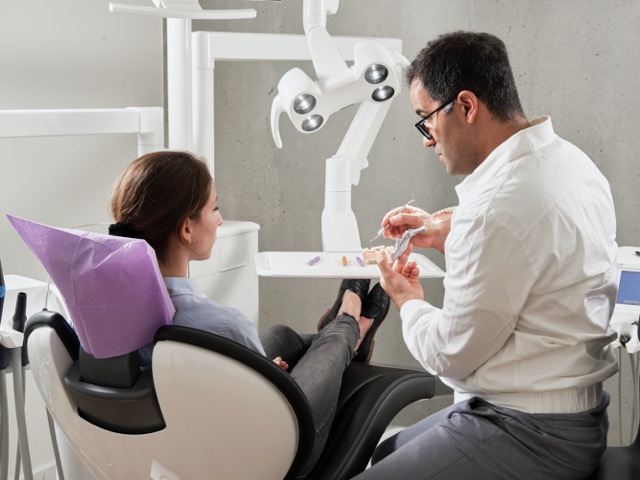Tartar Troubles? Discover How to Remove Calculus Bridge

When you see the phrase “calculus bridge,” you probably think of math and architecture (I did). However, we’re talking about calculus on teeth, commonly called tartar. Dental calculus is the scaly next step beyond plaque, the sticky film that forms on your teeth after eating or drinking. When plaque is left in your mouth, it combines with your saliva to create hardened scales, aka calculus or tartar.
If you’ve ever looked up calculus bridge images, you know that it can get pretty serious and gross. So, let’s talk about what you can do to prevent calculus buildup and how to remove it.
How the Calculus Bridge Was Built

When tartar is left to build up over time, it can spread across multiple teeth, forming a calculus bridge. Some of the most severe calculus bridge cases can even spread up the affected teeth and below the gumline, causing long-lasting problems.
Calculus bridges start simply by not removing all of the sticky, filmy plaque present in your mouth. Dentists say it doesn’t take very long for that sticky film to mix with the minerals naturally found in your saliva to form the hard scales of tartar. That’s one of the reasons why keeping up good brushing and flossing habits is so important!
How a Calculus Bridge Affects Your Teeth
We all know plaque and tartar buildup is bad, but why?
1. Halitosis (Bad breath)
Tartar and plaque make your mouth smell bad, even if you chew gum or use mouthwash.
2. Cavities
Did you know that bacteria can live underneath the hard scales of tartar? Because dental calculus can’t be brushed away, any bacteria under a calculus bridge can thrive, eating away at healthy enamel and causing cavities.
3. Gingivitis
This is when your gums become red, inflamed, sensitive and prone to bleeding. It makes brushing and flossing unpleasant and can lead to more serious diseases if left untreated.
In addition to these three problems, calculus bridges can cause disease and other issues like tooth decay, tooth loss and receding gums.
Here’s How To Remove a Calculus Bridge

You may have seen DIY removal methods like brushing with baking soda, swishing white vinegar or gargling hydrogen peroxide. These things may help soften tartar or remove plaque, but they aren’t ideal for tackling the more serious problem of a calculus bridge.
The only safe way to remove a calculus bridge is by visiting a dentist. Dental professionals know how to use specialized tools like dental scalers to scrape away the tartar without harming healthy enamel or gums. You can even get a deep cleaning and polish to ensure your teeth are as clean and healthy as possible.
Prevention is the Best Policy For a Calculus Bridge

Ultimately, the best thing to do for a calculus bridge is to prevent sticky plaque from forming and remaining in your mouth. Limiting sugary or acidic foods, gently brushing and flossing and staying hydrated are all simple, effective ways to improve your oral health and prevent tartar buildup, meaning a calculus bridge never has the chance to form!
FAQ
1. What is calculus bridge?
A calculus bridge occurs when tartar (also called dental calculus) grows across multiple teeth. This is a significant buildup of tartar, or hardened plaque, which harms your teeth.
2. Can I remove calculus myself?
Some at-home methods, such as baking soda or white vinegar solutions, may help loosen or remove some tartar buildup. However, it’s best to visit a dentist for safe, complete tooth calculus removal. To prevent tartar buildup, practice good oral hygiene with regular brushing and flossing.
3. Is calculus bridge harmful?
Dental calculus can cause gum disease, tooth decay, and bad breath. When you notice signs of tartar buildup, it’s best to schedule a dental appointment to preserve your oral health.






